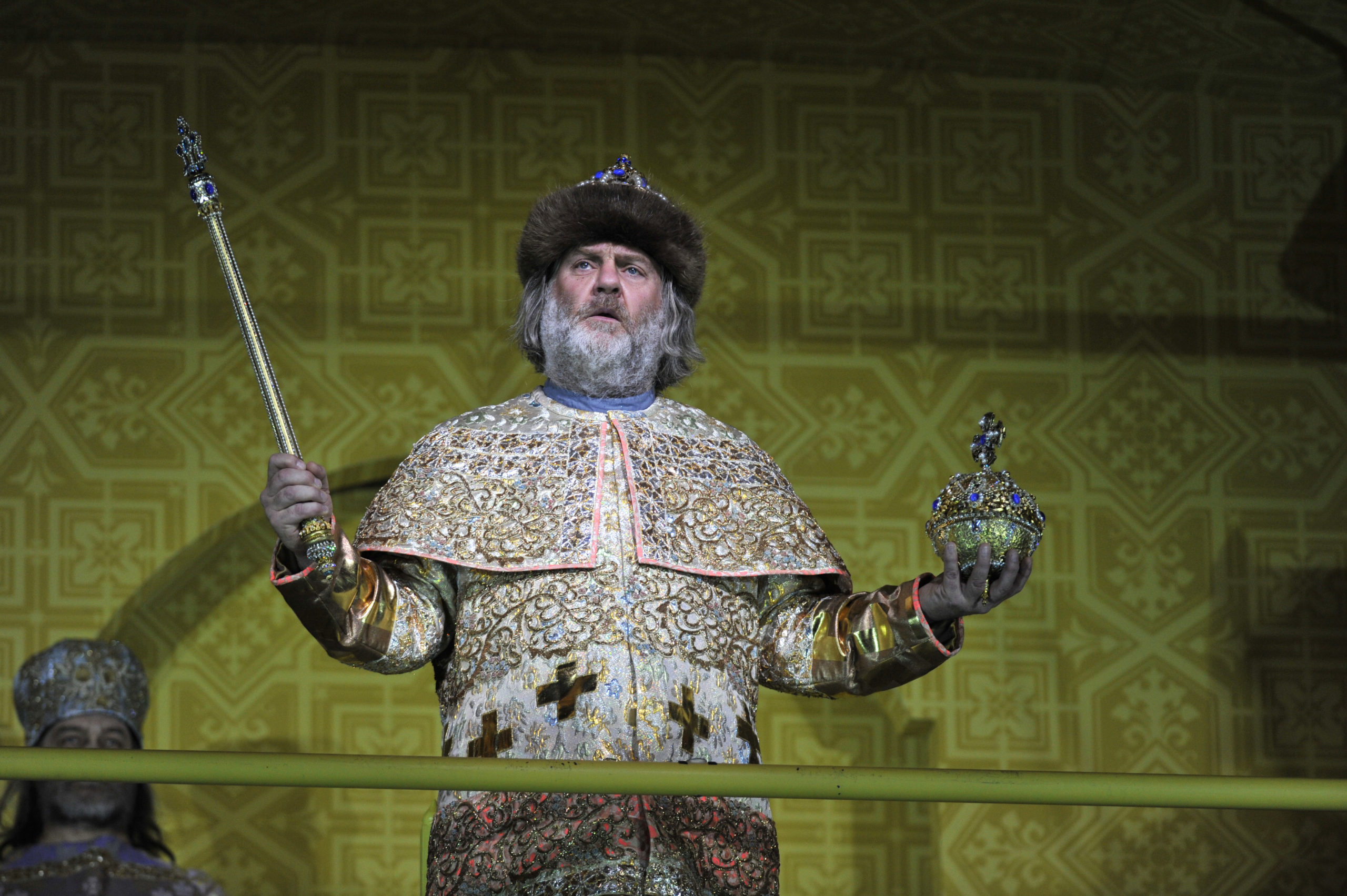The Russian Kaleidoscope
Shifting the image adjusts the story.

Russia: Myths and Realities, Sir Rodric Braithwaite, Pegasus Books, 270 pages.
Claudio Rangoni, bishop of Reggio Emilia and apostolic nuncio to Poland from 1598 to 1606, was not a Jesuit. On that point, Sir Rodric Braithwaite has perhaps drawn too uncritically on Mussorgsky’s great historical opera Boris Godunov, of which he is clearly and rightly a fan. It is a paradigm of something Sir Rodric successfully conveys: While there are facts about Russian history, there is also much that is mythologized.
The Bolshoi Opera made Mussorgsky add “the Polish Act,” now Act III of the complete Boris, because without it there was no female lead and the lead tenor character of the False Dmitri was just a cipher. There are corresponding scenes in his source, Pushkin’s play of the same name, but Pushkin did not include Rangoni by name. Mussorgsky, writing his own libretto, not only included him but made him a Jesuit as well.
How could he not? Rangoni’s role in the opera is that of encouraging an invasion of Russia by a young adventurer who may have been, but probably wasn’t, the rightful heir to the Russian throne, and who was willing to convert to Catholicism to secure Polish support. Aggression by Poland, Catholic plots—Rangoni must have been a Jesuit, symbol of slinky plots in Russia and much of the rest of the world.
Yet he apparently was not. More mythmaking.
Russia matters to all of us, even if we are only trying to get accurate information about the present war. Braithwaite tells us that “pogroms broke out in 1905–6, organized by right-wing bully boys, the Black Hundreds.” That touches my family story: my great-grandparents had to leave Odessa because of that, coming first to New Haven and then to New York.
But even that was not when I first became fascinated by Russia. That would be when my parents were introducing me to opera one record at a time from the Metropolitan Opera Record Club, a late 1950s collaboration between the Met and Book-of-the-Month Club. My fourth was Boris Godunov, sung in English, with friends of ours in the cast and cover art showing a tsar brooding under a dark purple sky. That’s what got me hooked: how about you?
Braithwaite, a retired diplomat who was Britain’s ambassador to Russia during the crucial years 1988 to 1992, has in about 250 pages condensed all of Russian history, not (as too often happens) starting with westernizing Peter the Great in the 18th century but all the way back to the foggy frozen plains of today’s Belarus, Ukraine, and western Russia. In about Charlemagne’s time, nebulous and conjectural tribes concatenated to form a state known as Kievan Rus. From there, Braithwaite takes us all the way to Putin and today’s war.
The tribes were Finno-Ugric, Slavic, and Norse. In the 20th century, when Germany was (mostly) an enemy, Russian historians became “anti-Normanist,” trying to edit out the “Aryan” strain in their ancestry. At the same time, it remained important to the narrative that the non-Norse tribes in the area at one point went to the Norse and “asked them to rule over us,” as the Russian Primary Chronicle says. That may not be what tribes literally ever do, but, say some, it’s very much the way a monk-chronicler might record the hiring of mercenaries.
Mercs or not, it is a point of pride for Russian historians that a single dynasty, the Rurikids, ruled Russia from earliest Kievan Rus all the way through the era of the “Mongol Yoke” and down to 1598, coincidentally (or not?) the very year in which Bishop Rangoni was dispatched on his sensitive mission in Poland.
When the Rurikid dynasty ended, leading to the beleaguered tsarship of formerly infallible administrator Godunov, the Russian state almost disintegrated after his sudden death. And again in the 1905–17 era, and again in 1991. In this and many other instances, Braithwaite ties together problems and occurrences that unite Russian history.
Braithwaite takes us through the early Romanovs, Mikhail and Aleksei, who kept the trappings of their predecessors while introducing cautious reforms, to the large-scale westernization under Peter and Catherine, both dubbed “the Great.” Then on to the 19th century, when blossoming literature coexisted uneasily yet fruitfully with absolutist politics, then Russia’s horrific 20th century, and finally today’s issues.
Braithwaite is never behind-hand with opinions, and some of them are inevitably questionable. Discussing the 1986 Reykjavik Summit between Reagan and Gorbachev, he dismisses strategic defense as “implausible” and perhaps the reason Reykjavik failed to “abolish nuclear weapons altogether.” The consensus remains that strategic defense posed the one challenge Gorbachev’s economy was unable to meet, and Reagan’s insistence on it was therefore a source of epochal success.
Subscribe Today
Get daily emails in your inbox
This assumes that the official demise of the Soviet Union represents an epochal success. But did it even really happen? One sees how shifting a stance even slightly makes the kaleidoscope of Russian history show a different picture.
At the end, Braithwaite invests heavily in Putin’s invasion of Ukraine being “fumbling.” In addition, he claims that the role of number two superpower is no longer available for Russia to take, as it has gone to China. These are credible opinions from an informed source, yet Braithwaite admits he has been wrong before, as when he formerly thought Russia no longer had imperial ambitions.
That the book is only lightly footnoted will not be considered a fault for a work aimed at the interested non-specialist, while covering such an immense and rich span so engagingly and with such an eye for detail. The abbreviated bibliography is very useful.